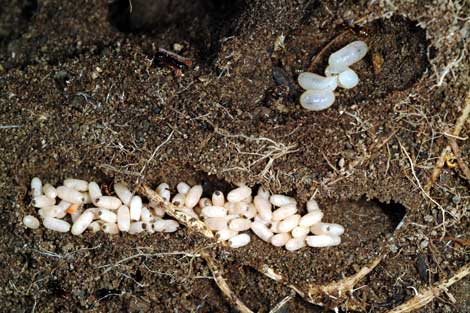
This cutaway view of a native ant colony shows four larvae (the larger white sacs at top) and pupae (below). The larvae are bigger than the pupae because they have probably been better fed. Ants go through these two stages before becoming adults. The queen ant lays eggs. These hatch into larvae, which then grow into pupae. The queen ant can choose to fertilise the eggs: unfertilised, they will be male, and fertilised they will be female. If a female larva is well nourished after it hatches, it could become a queen. Poorly nourished females become worker ants, which are sterile.
Using this item
Natural Sciences Image Library of New Zealand
Reference:
DSCF7317
Photograph by Peter E. Smith
This item has been provided for private study purposes (such as school projects, family and local history research) and any published reproduction (print or electronic) may infringe copyright law. It is the responsibility of the user of any material to obtain clearance from the copyright holder.






Add new comment